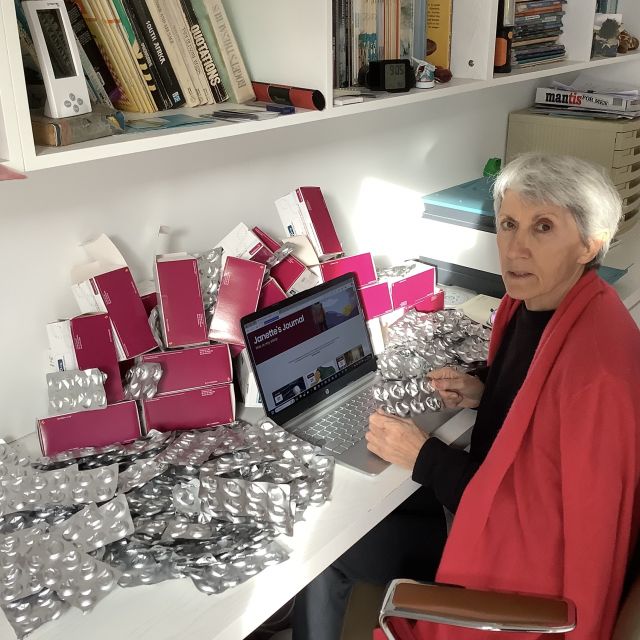My Stent is Removed
Under general anesthetic, a urologist has removed the stent in the tube that goes from my left kidney to my urethra.
On the day of my procedure, the hospital waiting room was crowded, but I wasn’t well enough to stand in a long queue. I explained this to a security guard who was really kind and helpful. He organised a chair for me and then handed in my papers at the reception desk.
The waiting was very difficult because, even seated, I can’t remain on a hard chair for any length of time. After thirty uncomfortable minutes, I was forced to take matters into my own hands. I got up and went through to the ward. I knew this was against the rules, but I was desperate. I really needed to lie down.
I stood outside the ward, peeking through the door, looking for someone to speak to. The place was very busy with wall-to-wall doctors, nurses and patients. I eventually managed to attract the attention of a nurse and quietly explained that I was a cancer patient and needed to lie down. Fortunately, there was one empty bed in the ward which she took me to. I was so grateful.
The place was bedlam. The staff were doing their best, but there were simply too many patients. Eventually, after a five-hour wait, I was taken to the pre-op area. What a place that was! More like a train station than a hospital. There were probably 20 patients – both men and women – and all in hospital gowns standing against the walls, plus at least another eight lying in beds before going into the operating theatres.
Eventually, it was my turn. Two nurses double-checked everything: name, ID number, temperature, blood pressure, allergies…the whole nine yards. One of them asked me if I had any underlying conditions. “Apart from terminal cancer, you mean?” I said. I saw their eyes widen in horror. I knew they were thinking, “Oh, goodness! Now what?”
I laughed and told them I was just teasing. “I don’t have any underlying conditions," I said. "However, there is one more thing: can I speak with the urologist, please?" They looked at me. "I’ve never met the man," I explained, "so if he is going to look up my wazooka I think we should be properly introduced.”
I’m not sure what they told him, but the consultant kindly came to see me and explained the procedure: first, the stent would be removed then dye inserted to see if the tube is clear. If it is – meaning the tube is ‘open’ - then the stent stays out; if it isn’t the stent goes back in. My hope was that the tube would stay open on its own.
Shortly afterwards, I was wheeled into the operating theatre. The next thing I knew I was back in the day ward. The stent had been removed, but I had to wait to be discharged and only a doctor could sign my discharge papers.
Rob came to collect me at 19.00 hrs. I’d spent nearly 12 hours in the hospital and I was so happy to get home.
It was a very challenging day, but I have no complaints. The doctors and nurses were brilliant: they were working flat out and being pushed to the limit. I think there were simply too many patients requiring too many operations. I have no idea what the solution is. More surgeons? More theatres? Fewer patients, probably! All I can say is that the staff were doing a wonderful job.

